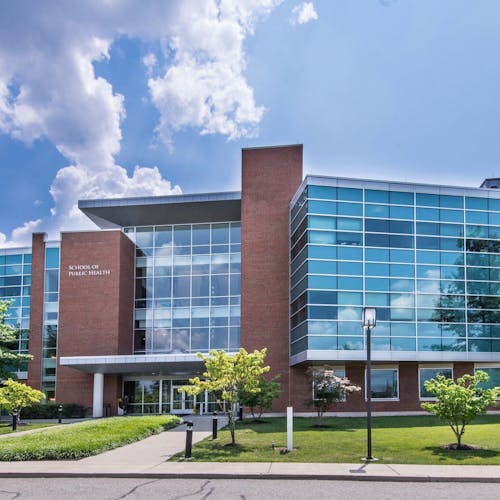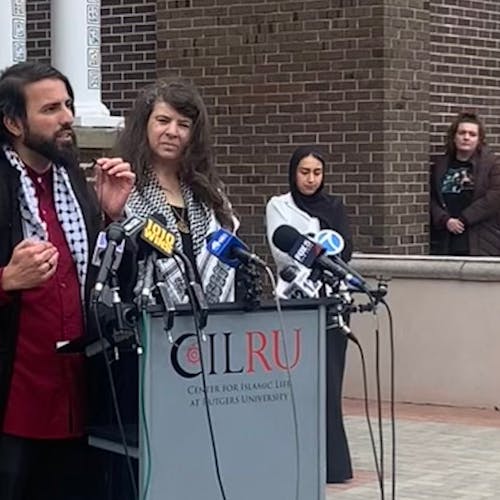University trims the fat to bring home the bacon

The recession has caused the University to search for ways to save money without sacrificing quality.
A report released in the spring details the actions the University has taken to save across the board.
"Since every budget has been affected by the budget cuts and the constraints of the budget … every unit is looking for ways to save money," said Vice President of University Budgeting Nancy Winterbauer.
She said the report, "Cost and Efficiency Savings Update — Spring 2009," shows cuts are an on-going process and every unit is doing its part.
Executive Vice President of Academic Affairs Philip J. Furmanski said despite the need to cut costs, the University offered a record-high amount of courses this year.
Last fall, the whole University offered 6,289 courses, 4,545 at the New Brunswick/Piscataway campuses, he said. This fall, the whole University offered 6,509 courses, 4,658 at the New Brunswick/Piscataway campuses.
"It's basically a combination of putting more resources in our education. We asked the faculty to see if there were more courses that could be offered that could accommodate the needs and the interests of students and then whatever money we saved, whether it be energy or salary increases … that was put into the academic activities," Furmanski said.
Class sections were consolidated to save money, resulting in fewer sections and larger sizes, according to the report. Classes with low enrollment were also cut.
Head of the Department of Biomedical Engineering Noshir Langrana said his department has cut staff but not classes.
"We're just managing on our own by loading faculty members with more work," he said. "That's all we can do because we cannot hire more people."
Political science Professor Amy Higer said she has been asked to teach more courses with more students.
"I know that I'm teaching much bigger classes for the same pay," said Higer, an adjunct professor.
Livingston College senior Peter Ibarra also noticed more students in his sections.
"Personally, since my freshman year the number of people in my classes have gone up … but I don't know if that's a direct result of budget cuts," he said.
Furmanski said the larger classes are a result of the University's record high enrollment this fall.
Another area hit hard by the economy was financial aid.
Vice President for Enrollment Management Courtney McAnuff said 15 percent more of the student body — about 4,000 students — have applied for aid this year, but the University has sufficient resources to meet the needs of students.
"We expect to disburse about $614 million in financial aid," McAnuff said.
School of Arts and Sciences junior Jenna Hampton said she receives less aid than she did in previous years.
"I don't understand how they have more funds to build a new stadium yet I get less in my aid than I did before," she said.
Other departments made little changes to save big bucks.
Art Librarian Sara Harrington said the Art Library on the College Avenue campus examined their book purchases.
"It just means that we want to be very careful that every book we buy for the library is a book that's really needed in the library," she said.
Busch Campus Dean Thomas Papathomas said faculty office telephone lines have been disconnected for the School of Arts and Sciences.
"I understand that this saves the University a good amount," he said. "This will save across the School of Arts and Sciences something like $2.2 million."
But he said this makes it difficult for outsiders to reach professors.
The University used several energy-saving measures to conserve electricity, reducing energy bills.
This included retrofitting buildings with energy-efficient products, installing energy-saving washers and dryers — which would save about $135,000 annually — and using the free energy source of Livingston campus' solar farm, according to the report.
"It's providing 10 percent of electricity for that whole campus and bringing down our electric bills while also improving our carbon footprint," University President Richard L. McCormick said. "There's practically no area in the University where we haven't found some savings or efficiencies."
The report shows the University saved in more areas including removing landlines from residence halls and consolidating dining facilities and management operations — a savings of $1 million each — and converting more operations to the Web.
The Web-based application saves $91,000 per year and online billing services saves printing and mailing costs, according to the report.
Winterbauer said the University was facing bad cuts at the start of this year's budgeting process due to a 41 percent loss of state support and high union contract costs.
But she said the cuts could have been worse if not for the $15.4 million cut of the federal stimulus package the University received, offsetting the state's cut in funding.
A second source of funds to prevent cuts came from the University's faculty.
"We've been talking with our unions with delaying some of the salary increases that were part of their contracts," Winterbauer said.
McCormick said last year's rise in philanthropic donations to $128 million and revenue from tuition and fees also helps subsidize the loss of state support.
But he is unsure of the status of future state support at the University.
"We're not giving up on the state of New Jersey, but for the short-run, it would be unwise to assume that state appropriations will increase," McCormick said. "They may go down again before they go up, given the recession."



